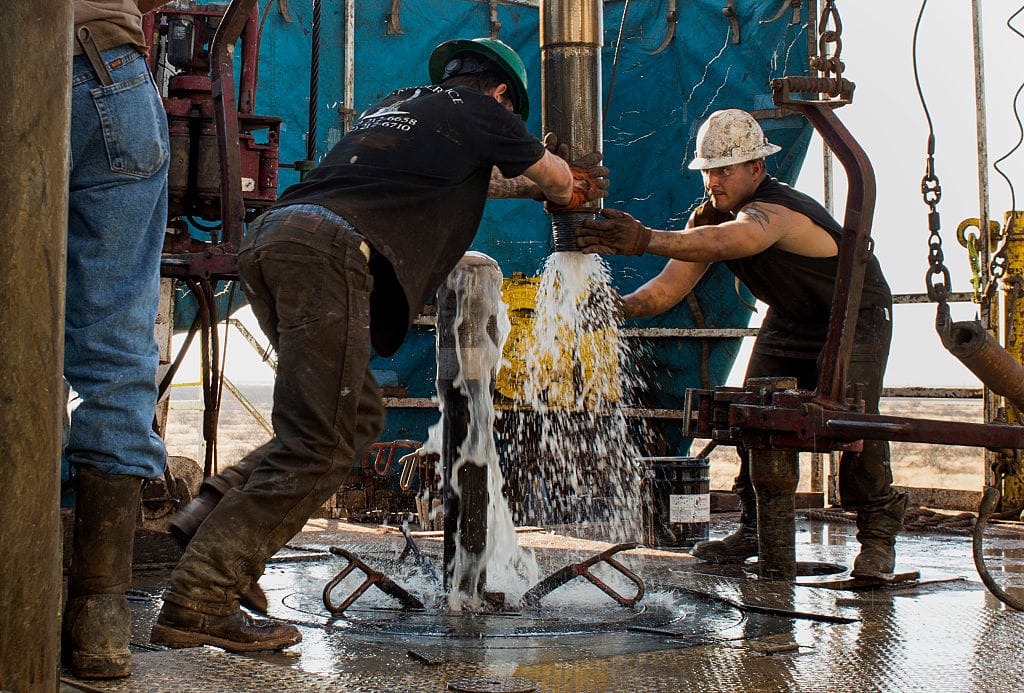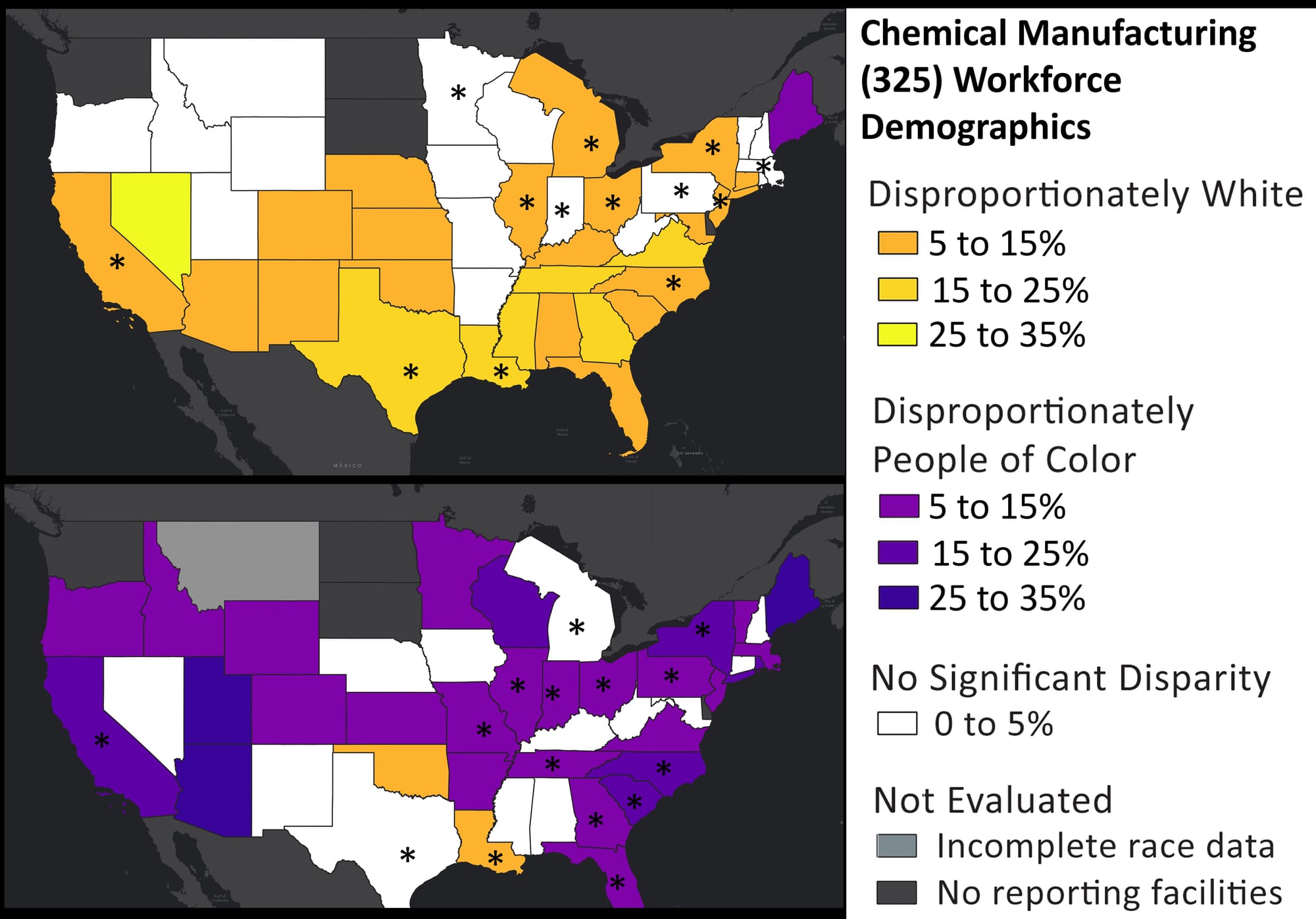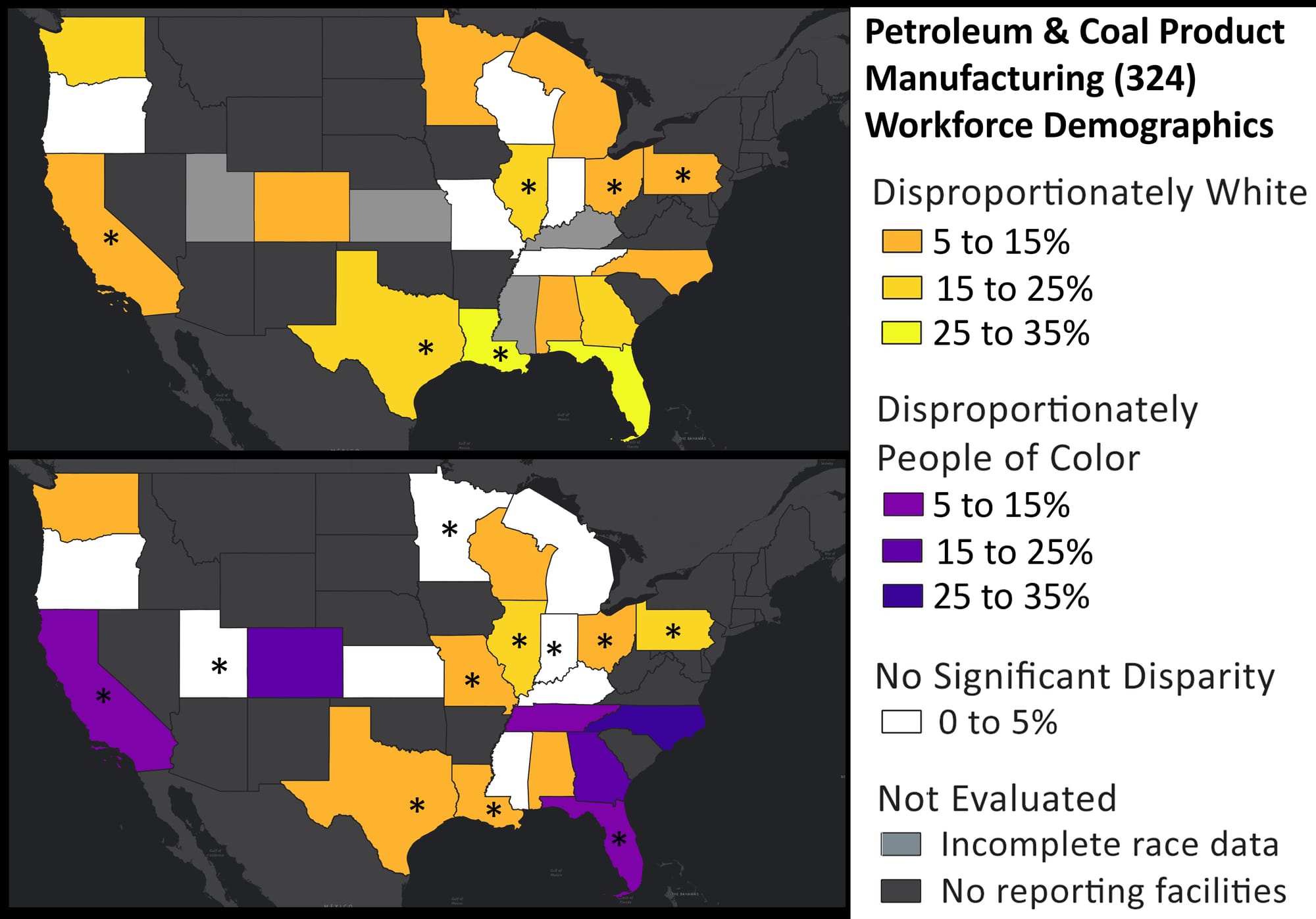Study: Minorities ‘systematically’ underrepresented in US petrochemical workforce
In Louisiana, few people of color are getting high-paying jobs in the industry — or even low-paying ones

Published by Yahoo! News, Energy News Network, WWNO, Verite News, Louisiana Illuminator
This country’s heaviest polluters also rely on a workforce that disproportionately fails to fill good-paying jobs with people of color who are more likely to be affected by their emissions, according to a new study.
The research, from Tulane University’s Environmental Law Clinic — currently under peer review — finds that people of color are underrepresented in high-paying jobs in both the chemical manufacturing and petroleum/coal industry.
And Louisiana, with one of the largest concentrations of petrochemical facilities in the United States, is the only state where minorities were underrepresented in low-paying and high-paying jobs in both industries.
For advocates there, this new report is proof that the good jobs are going to white people while much of the toxic emissions and health risks are being endured by people living in the surrounding communities, which tend to be low income or predominantly minority.
“The pollution versus jobs narrative is really oversimplified because the trade off affects different groups unevenly,” said Kimberly Terrell, director of community engagement and a staff scientist with the Tulane law clinic who led the research team. “Petrochemical jobs that mostly go to white workers can't offset the harm of petrochemical pollution that mostly occurs in Black and Hispanic neighborhoods.”
The research showed that people of color were generally underrepresented in high-paying jobs in both the chemical manufacturing sector and petroleum/coal industry and often were over-represented in low-paying jobs in the chemical industry with results “mixed” for the same category on the petroleum side.
In another recently released report, researchers described a situation in Louisiana’s Plaquemines Parish in which local residents of color were unable to take advantage of construction jobs at a terminal that exports methane, also known as liquefied natural gas.
The Mississippi River ferry connecting the plant to the community did not run early enough to get the employees to work by 5 a.m., as required. And prospective workers — many without reliable transportation — had to attend weeks of training in New Orleans 55 miles away, according to researchers from Texas Southern University and the University of Montana.
Nationally, higher paying jobs in the chemical manufacturing industry disproportionately went to more white people in Texas, Louisiana and Georgia where minorities represent 59%, 41% and 49% of their respective states’ populations but held 38%, 21% and 28% of the better paid jobs within the industry.

In the petroleum/coal industry, people of color were underrepresented in higher-paying jobs in at least 14 states — including Texas, California, Louisiana, Ohio, Pennsylvania and Illinois.
Ashley Shelton, founder and chief executive officer of statewide lobbying nonprofit The Power Coalition for Equity and Justice, praised the study for proving what she and most Louisiana advocates have known for quite some time. Shelton said state leaders, and others across the country, are “selling out” fenceline communities to the petrochemical industry.
“We have to stop pretending oil and gas, which Louisiana we are great defenders of, is gonna save us because they're not and they never were and aren't trying to,” Shelton said, noting that Louisiana is last in many quality-of-life indicators. “We are winning the race to the bottom.”

Study confirms earlier findings
The study is an extension of 2023 research the same team conducted, prompted by questions from Floodlight about data on racial disparities in the petrochemical industry. The first study focused on manufacturing jobs in the majority-minority communities that make up Louisiana’s “Cancer Alley” and the heavily-industrialized parts of Texas along the Gulf Coast.
Tulane researcher Gianna St. Julien and Michael Ash, a professor of economics and public policy at the University of Massachusetts-Amherst, served as co-authors on both studies.
The standout in the earlier research was St. John the Baptist Parish in southeast Louisiana where people of color made up nearly 70% of the working-age population but less than 30% of the manufacturing workforce there. And when it came to higher-paying jobs, minorities only showed up in 19% of that group.
Statistics substantiated what locals there had been feeling and expressing anecdotally for years.
Jefferson County posted the highest disparity percentage in Texas where minorities represented 59% of the working-age population but only 28% of the manufacturing workforce, according to the earlier research.
In the expanded study, Terrell and her team conducted their research through a national lens using data at the state level from the U.S. Equal Opportunity Commission, focusing on jobs in the chemical manufacturing and petroleum/coal products industry.
Those numbers were cross referenced with wage data published by the Bureau of Labor Statistics and demographic information — including race and education — from the U.S. Census Bureau’s American Community Survey.
The study assigned “high-paying jobs” to positions that had a median hourly pay rate between $28 and $78 and classified “low-paying jobs” as ones with a median wage between $15 and $37 an hour.

Louisiana center of disparity
Louisiana was the only state where people of color were underrepresented in low- and high-paying jobs in both categories of industries. Those disparities often existed in the places where industry received generous tax subsidies for job creation, the study found.
The team focused on Louisiana because of how the state stood out in workforce disparities, the concentration of petrochemical facilities, racial inequities across society and ”internationally-recognized environmental justice issues.”
In the state, people of color make up about 41% of the working age population but only 22% of the workforce in the petroleum/coal industry, the study found. Minorities accounted for nearly 27% of the low-level positions and only 15% of the better paying jobs in the category, the study showed.
And on the chemical manufacturing side, minorities overall accounted for 40% of the workforce in Louisiana, holding 32% of the low-paying jobs and 21% of the higher paid positions, the study said.
As in the earlier research, St. John the Baptist Parish in Louisiana had the most extreme overall disparities, followed by East Baton Rouge and Iberville parishes.
“One thing that really stuck out was that there is no evidence that these disparities are related to an education gap,” Terrell said.
Terrell defined the education gap as the proportion of white people who’ve attended college compared to people of color who’ve done the same.
“For a long time, petrochemical companies have attributed those disparities to education gaps,” Terrell said. “But there has never been any kind of study or research to back that up. It’s always something that just kind of sounds like a reasonable explanation, without any data behind it.”
The study attributes “systemic racism” as the driver of the disparities, not education.
To address that, the research team suggested better enforcement of Title VI anti-discriminatory federal laws. Another solution: state regulators could require cost-benefit analysis that factors in economic benefits in industrial permitting. As it currently stands, the laws around cost-benefit mandates vary widely from state to state, the report said.

Tax breaks — but no new jobs
A pillar of Louisiana Gov. Jeff Landry’s administration has been to boost economic development by leveraging the state’s natural resources and removing obstacles to make it more attractive to the oil and gas industry.
One of the first things he did after taking office in 2024 was to revamp the Industrial Tax Exemption Program by removing stipulations that tied tax breaks to job creation.
Landry’s office declined to comment on the study and its findings.
The study criticizes Louisiana’s lucrative tax incentive program for overestimating the economic benefits the industrial sector has on fenceline communities.
Researchers found that between 2010 and 2022, the petroleum industry in St. John the Baptist Parish got $19 million in first-year tax credits but created no new direct jobs.
“Across the board for all of the parishes that we really looked at, you saw these extreme kind of values; we're talking billions in some cases of exemptions over that timeframe, with very little jobs actually created,” said St. Julien, who crunched the tax exemption data. “The economic benefit these exemptions were supposed to bring to the state (and) into these individual parishes, we see that's not really the case, jobwise.”
Officials with Louisiana Economic Development, which oversees tax incentive and business outreach initiatives, also declined to comment on the study, noting its programs do not contain mandates related to the workforce racial demographics.


